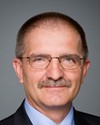Thank you very much.
It's indeed an honour to be invited to speak to this committee.
I've been in practice now for approximately 20 years. I graduated from McMaster University, where I attended medical school. I went on to the University of Ottawa, where I trained in general and cosmetic surgery. I practise in Barrie, Ontario, my hometown. The University of Ottawa and Ottawa bring back a lot of memories.
After 16 years of practice in a hospital setting, we came up with a concept that was literally out of the box. It was innovation in delivering health care in out-of-hospital surgery facilities—advanced health care, including general anesthetic procedures. As a model, while we do many procedures at Lakeview Surgery Centre, we are going to present the obesity management with the lap band program.
In summary, we're going to talk about creating an accredited surgery facility: how it's done, how accreditation licensing takes place, and why we focus on obesity. We will talk about our lap band program—what is a lap band? I brought a model, which we'll see during the presentation—and our own Lakeview Surgery Centre experience.
In building the centre approximately four years ago, we consulted with the City of Barrie building and zoning department. We worked very closely with them, in compliance with all their regulations. We bought a property, literally on the water, on Kempenfelt Drive. We created a separate front entrance, graded the driveway for full wheelchair access, and developed a new electrical transformer for some of our advanced equipment. We installed a generator for backup electricity, and then built a side entrance and exit for evacuation, in the event of an emergency.
We installed a commercial elevator that has high capacity, redesigned the flooring and ventilation using advanced technology with engineers and architects who specialize in health care facilities. We installed oxygen, suction, and medical air in the infrastructure of the building. So everything is actually built into the infrastructure of the building.
Literally, we have a fully accredited and licensed operating room with a view of Kempenfelt Bay and a four-bed recovery room, which also looks onto Kempenfelt Bay.
Keep in mind this is a fully accredited licensed facility. There's a private accreditation group called the CAAASF, the Canadian Association for Accreditation of Ambulatory Surgical Facilities. Plus, in the last two years the College of Physicians and Surgeons has recognized that this is an evolving field, doing out-of-hospital surgery, including advanced surgery. The College of Physicians and Surgeons inspects the facility, as well, to make sure it is in compliance. Essentially, we have created a hospital in an out-of-hospital facility.
As you can see, obesity is defined by the BMI, or body mass index. Normal weight is under 25 BMI. We focus on managing the severely obese and morbidly obese patients with a BMI of over 35. There are very interesting trends in obesity in Canada. In 1985, across the country, less than 10% of the population at that time was obese. Fast-forward to 2006, and now we have the majority of provinces with an over 20% obesity rate. The average Canadian overall obesity incidence is 23%. Not only is this astounding, the growth in our obesity population, but the associated chronic medical conditions that have a major impact on health care funding and expense are directly associated with the level of obesity.
For example, in regard to high blood pressure, there is about four times the likelihood patients will have high blood pressure, if they're in the obese category, and six times the likelihood they will have type 2 diabetes, sleep apnea—where they literally fall asleep during their sleep with heavy snoring, gallstone disease, or strokes. These are all associated with increasing obesity.
Furthermore, the mortality rate is on the rise. It is directly linked to obesity rates. In 1980 there was only about a 5% mortality rate associated with obesity; as we get into the 2000s, in 2005 it approached 10%.
The surgical options are twofold. There's the lap band and the gastric bypass.
Do diets work? This is a very typical study looking at diets.
When a person starts a diet, and it doesn't matter which diet it is.... When a person who is in the severely obese category starts a diet, they will lose some weight initially. But when you track those patients a year and five years after they have started a diet, no matter what diet it is, whether or not it's associated with counselling, the obesity rate is actually higher. So in fact, conventional diets exacerbate obesity, something we're not told by the diet industry.
I brought the lap band. The concept is.... We create two things. One, we create a small pouch for the stomach. The patient eats food, and after eating a small portion they feel satisfied, and they feel satisfied for a longer period of time. The patient doesn't get hungry between meals. Two, we're also compressing the vagus nerve, which is the nerve that gives us the feedback mechanism to fullness and satisfaction.
Essentially, there are two things. There's an anatomically small stomach, plus we're also compressing the vagus nerve for the feedback loop to feel satisfied with meals.
This is adjustable and reversible. This is what we call a port. This is all underneath the skin attached to the muscle. We can adjust the degree of compression around the stomach and the pouch. So much like our waist, as we lose weight the circumference of the waist goes down; it's the same with the stomach. We lose weight, and the circumference of the stomach goes down. So the patient comes in for what we call adjustments. We put in some salt water, which snugs up the lap band.
We are looking at what we call the green zone. This is what we're achieving with the lap band. We put in enough saline so that patients feel satisfied with small portions. They have good weight-loss control, and there are no abnormal or punitive symptoms, such as discomfort or acid reflux. There are patients in what we call the yellow zone. That's when there's not enough fluid in the band. Then there's the red zone, if the band is too tight.
We can adjust it, and we have control over the degree of satisfaction with meals.
All of what we call the co-morbid or associated conditions with obesity decrease substantially after the lap band surgery, including high blood pressure, diabetes, sleep apnea, and acid reflux. Furthermore, the death rate associated with obesity drops significantly after a patient has had a lap band. There is quite a major difference in the death rate between the two.
This has become very accepted in the medical field. There are several societies now. The Canadian clinical practice guidelines recommend bariatric surgery, lap band surgery, or gastric bypass surgery for patients who are obese with associated medical conditions. It's highly effective in achieving sustained weight loss in resolving co-morbidities.
At Lakeview Surgery Centre we have developed a team. I am the medical director. We have a nurse who is the director of weight management. We also have a certified dietician, a psychologist, and a personal trainer who work with our patients to ensure long-term success of this really chronic condition. It's now accepted that obesity is a chronic condition, untreatable by conventional means.
In terms of the first 59 patients we operated on with the lap band, you can see the starting weight at the top with the dark bar, and the end weight below. As you can see, some of our patients weighed over 400 pounds. All of the patients are losing weight successfully, and more importantly, are keeping the weight off. The average weight loss was 45 pounds, or approximately 20% of the patient's total body weight. The range in patients just starting the program is from three pounds to patients who have lost over 100 pounds, with a small number of complications.
This is just a case in point, in conclusion. A patient came to us in 2010. She was 57 years old. Her BMI was 46. She weighed 304 pounds. She had high blood pressure. She had acid reflux. She was on two medications for those conditions. We tracked all the patient's progress with a graph. After 21 months, she lost 101 pounds, or approximately 33% of her body weight. Her BMI dropped from 46 to 30, and she came off all her medications. This is what a typical patient looks like. It is a very rewarding field, to work with patients who are obese who finally achieve success after years of agonizing diets and yo-yo dieting.
In conclusion, out-of-hospital surgery facilities are innovative and safe in delivering health care to our communities. The lap band program, specifically as a model that we used here for this presentation, is safe and effective in combatting the obesity epidemic.
Thank you very much for your attention.












